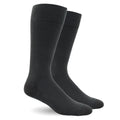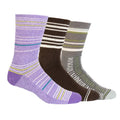How to Determine If Compression Socks Are Covered by Your Health Insurance
Posted by HAYLIE SEGAL

Compression socks have gained popularity for their ability to alleviate various leg-related health issues, such as deep vein thrombosis (DVT), varicose veins, and edema. These specialized socks work by applying pressure to the legs, improving blood circulation and reducing discomfort. If you're considering purchasing compression socks, you might be wondering whether your health insurance will cover the cost. In this blog post, we'll guide you through the process of determining whether compression socks are covered by your health insurance.
-
Understand your health insurance policy: The first step in checking if compression socks are covered is to review your health insurance policy. Familiarize yourself with the terms and conditions, coverage limitations, and exclusions. It's important to note that health insurance policies can vary significantly, so it's crucial to understand the specifics of your plan.
-
Contact your insurance provider: Once you have a good understanding of your policy, the next step is to contact your health insurance provider directly. Reach out to their customer service department via phone, email, or the online portal provided by your insurer. Ask specific questions about coverage for compression socks, including any requirements or restrictions that may apply.
-
Verify medical necessity: In many cases, health insurance coverage for compression socks depends on medical necessity. Some insurance providers require a doctor's prescription to validate the need for compression socks. Consult with your primary care physician or a specialist who can evaluate your condition and determine if compression socks are medically necessary for you. If a prescription is required, request one from your healthcare provider.
-
Inquire about coverage details: When speaking with your insurance provider, be sure to inquire about the specifics of coverage for compression socks. Ask about any deductibles, copayments, or coinsurance you may need to pay. Additionally, find out if there are any limitations on the number of socks you can obtain or any specific brands or types of compression socks that are covered.
-
Investigate coverage exceptions: While speaking with your insurance provider, it's essential to ask about any potential coverage exceptions or restrictions. Some policies may exclude coverage for certain conditions or have specific requirements that must be met before coverage is granted. Understand these exceptions to avoid surprises when filing a claim.
-
Submit a claim: If you determine that compression socks are covered by your health insurance, it's time to submit a claim. Your insurance provider will provide instructions on how to submit the claim, including any necessary documentation such as the doctor's prescription or a letter of medical necessity. Be sure to follow the process accurately to increase your chances of reimbursement.
-
Keep records and follow up: Throughout the process, it's crucial to maintain meticulous records of all communications, including phone calls, emails, and claim submissions. Keep copies of any documentation related to your compression socks, such as prescriptions, receipts, and invoices. If any issues or delays arise, you'll have the necessary evidence to follow up with your insurance provider and advocate for coverage.
Determining whether compression socks are covered by your health insurance can be a bit complex, but by following these steps, you can navigate the process with confidence. Remember to review your insurance policy, contact your provider, verify medical necessity, and inquire about coverage details and exceptions. If compression socks are covered, submit a claim and maintain records for future reference. By being proactive and well-informed, you can make the most of your health insurance benefits and potentially receive coverage for the cost of compression socks, helping you maintain optimal leg health.
SHARE:




































